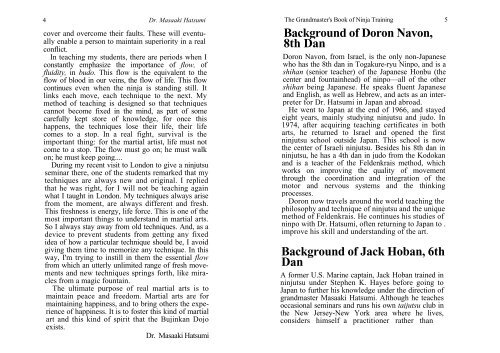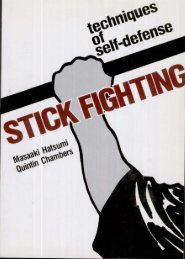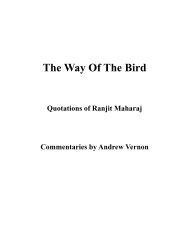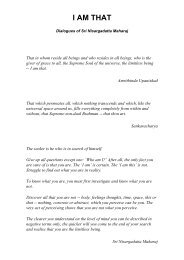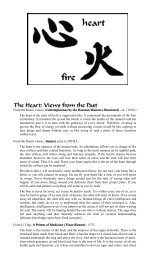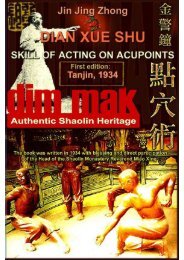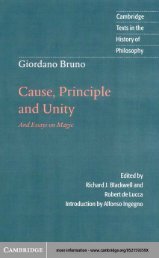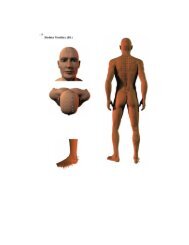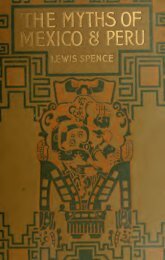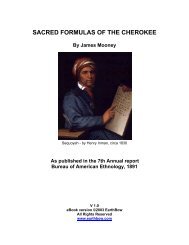Create successful ePaper yourself
Turn your PDF publications into a flip-book with our unique Google optimized e-Paper software.
6 Dr. Masaaki Hatsumi<br />
teacher. Nevertheless, he holds a shidoshi license<br />
from the grandmaster and is authorized to teach the<br />
art <strong>of</strong> ninjutsu.<br />
Jack Hoban has written two <strong>book</strong>s on the arts <strong>of</strong><br />
tantojutsu and bojutsu, and is now working on a third<br />
<strong>book</strong> on his <strong>training</strong> philosophy and how it applies to<br />
various levels <strong>of</strong> contemporary life in the United<br />
States. He holds a master's degree in business administration<br />
and is an executive <strong>of</strong> a major financial<br />
services corporation.<br />
Background <strong>of</strong> Charles<br />
Daniels, 5th Dan<br />
Charles Daniels has studied the major martial arts <strong>of</strong><br />
Europe and Asia, settling on ninjutsu as his life's<br />
guiding art. He has written several <strong>book</strong>s on ninjutsu.<br />
He tours the U.S. and Europe, giving seminars<br />
on the art <strong>of</strong> the shadow warrior.<br />
<strong>The</strong> Translator<br />
Born in Africa almost half a century ago, in what is<br />
now Zimbabwe, Chris Reynolds has spent most <strong>of</strong> his<br />
life involved with languages (ancient and modern),<br />
medical matters (Western and Oriental), Indian philosophy,<br />
and martial arts (boxing, judo, aikido, and<br />
ninjutsu). He speaks a few <strong>of</strong> these languages—some<br />
quite badly—and works mainly as a freelance medical<br />
translator, at which he thinks he is somewhat less<br />
unskilled. He has lived in Japan for 14 years, and is<br />
married, with two young children. He now studies<br />
ninpo under Dr. Hatsumi, for whom he acts as an<br />
occasional interpreter. Given the choice, he would<br />
like to be younger, less clumsy, more intelligent, and<br />
able to fly.<br />
PRELUDE<br />
Hatsumi Sensei (H): Those <strong>of</strong> you who have come to<br />
Japan from the USA probably have got quite a different<br />
impression during this seminar <strong>of</strong> martial arts as<br />
practiced here, as compared with what you have so<br />
far been used to in your own countries. So I'd like you<br />
please just to say what you want about your<br />
experiences.<br />
Ed Sones (ES): In the States—I come from<br />
Texas—it seems that most <strong>of</strong> the <strong>training</strong>, including<br />
my own <strong>training</strong> for the past few years, has been too<br />
intense and has been using too many techniquestrying<br />
to learn technique after technique—and you<br />
come over to Japan and you realize the depth <strong>of</strong> the<br />
feeling <strong>of</strong> ninjutsu. It's something that you can't explain,<br />
and you just have to experience. And this is the<br />
place to do it.<br />
Bill Atkins: I agree with the criticism <strong>of</strong> tension<br />
and <strong>of</strong> trying to use one part <strong>of</strong> your body more than<br />
another part, instead <strong>of</strong> everything being together.<br />
Here I learn a lot more about everything moving at*


